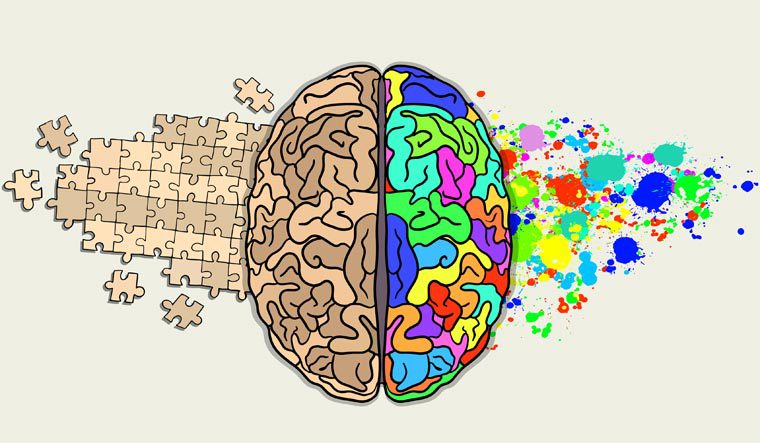
I was literally dancing in my kitchen last Sunday morning, clutching a newspaper article to my chest. I was celebrating that there is finally a name for what I’ve been doing for half a century. As a teacher and therapist, as a college professor, and more recently, as an improvisational artist, I’ve taken a somewhat different approach to supporting people as they try to take better care of themselves and make the changes they want to make in their lives. I see my role as helping people access their own creative resources as they learn and grieve and grow. My marketing message could be, “Let’s get in touch with the part of ourselves that’s smarter than we are.”
The article that caused me such excitement was written by Anne Murphy Paul, the author of “The Extended Mind: The Power of Thinking Outside the Brain.” Ms. Paul’s work is based on the work of Andy Clark and David Chalmers and their 1998 article which asked the question “Where does the mind stop, and the rest of the world begin?
Our brains are more limited than we sometimes realize but the concept of the extended brain suggests we can rely on resources in the world beyond that can supplement our usual solitary thought processes. Ms. Paul states that the “brain can be less workhorse and more orchestra conductor.” This seems to me like Einstein’s notion that “the intuitive mind is a sacred gift, the rational mind its faithful servant.”
According to the theory of the extended mind, we extend our brains capacity and lessen its burden when we offload functions to four types of platforms. The first platform includes the tools of technology. By now many of us are used to relying on our devices to unburden our minds. They remind us of appointments, hold information we will need in a further time, and make memorizing details mostly unnecessary. Only downside seems to be that anxious feeling in the pit of your stomach when you can’t find your phone.
The second platform is our bodies. When we pay attention to the body’s messages, the body has useful, sometimes critical wisdom we need for maintaining our wellbeing. Teaching people how to access this information through somatic awareness and kinesthetic movement has been a highlight of my professional life as a dancer and a social worker. The body’s wisdom is coming from a place in us that is smarter than we are aware of. Living in and from this place makes our lives embodied–which means more fully alive and fully present for all our experiences.
The third platform is physical space. Moving mental constructs out of our heads and onto a sketch pad or flashcards or the whiteboard on our computer allows us to step back and come at the information with our visual and tactile senses. I’ve found that role playing or enacting a scene like a job interview ahead of time creates another way of coming to self-confidence and advancing one’s skills.
The fourth platform is other people’s minds. Creativity is heightened and new learning occurs when we leave our solitary thoughts and communicate with others. I noticed early on in working with individuals that, as valuable as having someone to talk with and bounce ideas off of, there is an even richer arena where the exchanges happen in a small group. I often would tell clients, when we work individually, you only get me. When we work together with others, a third entity is born. We explore together in a framework where one idea stimulates another, one person’s experience resonates and stimulates other people’s thoughts and ideas. In the small group we have all extended our minds and helped each other become wiser and smarter than before we began.
When Clark and Chalmers came up with this theory it was widely derided as wacky, (which doesn’t surprise me) but now the theory is widely accepted.
If you have an interest in extending your mind around the theme of the Art of Grieving, join me and others on the Reimagine Platform this Sunday June 20th at 4 pm Eastern time. Register here – https://letsreimagine.org/76768/the-art-of-grieving-emerging-towards-a-life-well-lived-2

